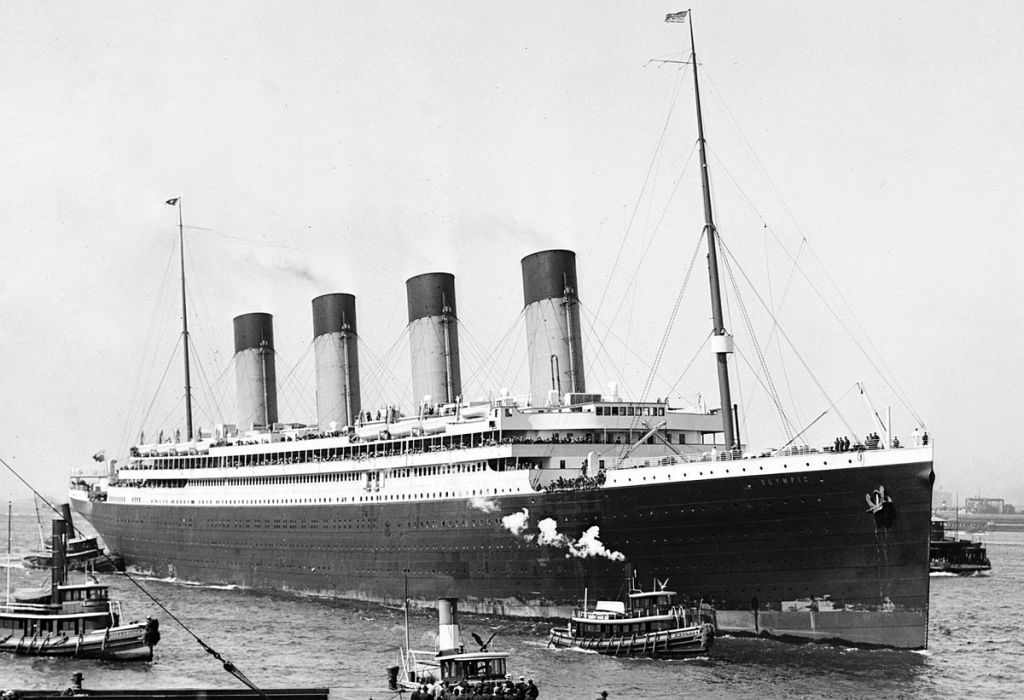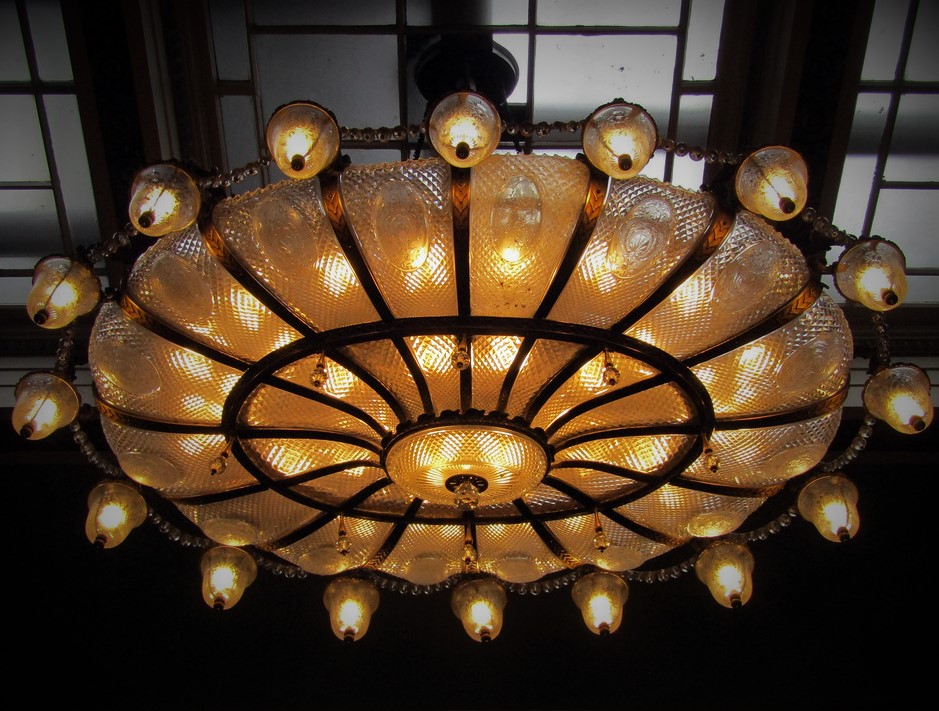
There was a heavy fog on the night of May 15, 1934, and the Nantucket Lightship lay anchored off Nantucket Shoals off Massachusetts. She sounded her foghorn as the 47,000 ton, 900 foot ocean liner, RMS Olympic, approached. The Olympic had been following the lightship’s radio beacon signal with the intent of altering her course when she was close enough, but the lookout had miscalculated the location of the Nantucket and was unable to see her until she was just 500 feet away. It was too late. The Olympic, nearly 75 times the size of the Nantucket, literally ran over her broadside and cut it in half.
Passengers In the first-class drawing room of the Olympic were unaware of the collision. All they heard was a dull thump and the gentle, soothing, tinkling of clean wine glasses on a sideboard. If they had looked up, they might have seen that the large crystal light fitting was slowly swinging from side to side.
The Captain of the Olympic halted the engines and ordered boats put over to save the crew, but the Nantucket sank within minutes. Seven of the eleven lightship crewmen drowned and four were rescued.

RMS Olympic was a British luxury liner belonging to the White Star Line and was sister ship of the Titanic and the Britannic. Construction started in 1908 at Harland and Wolff in Belfast and it was launched in 1910. At the time of its completion, it was the largest and most luxurious liner in the world and used on Trans-Atlantic crossings.
Olympic was retired from service a year after the Nantucket disaster and was sold to Sir John Jarvis who had it towed to Jarrow where the ship’s superstructure was demolished, and its fittings stripped and auctioned off. Two years later, the hull was towed to the shipbreaking yard of Sheffield firm T.W. Ward at Inverkeithing, in Fife. By the end of the year the steel shell had been melted and re-made into items for household and industrial use.
Some items from the Olympic found a new home in Sheffield, in the vestibules leading to the banqueting room at the Cutlers’ Hall.
The most striking of the decorations was the same crystal and ormolu electrolier that had hung in the first class drawing room of the ship, bought by the Master Cutler, Sir Samuel Roberts, and presented by him to the Cutlers’ Company in 1936.


The light was a massive ornamental ormolu electrolier with cut and engraved glass panels and cut glass beadings and had a border of 16 lights with engraved glass shades and bead festoons.
In the same vestibule, the walls were covered with mahogany dado and sycamore panelling to the level of the door heads. This was from the second class library of the Olympic and was purchased by the Cutlers’ Company and installed by Johnson and Appleyard’s of Sheffield.
The Cutlers’ Company also bought four ornamental ormolu, oval electroliers with shaped cut and engraved glass panels, and these were hung in the second and third vestibules.

These relics from RMS Olympic can still be seen today, but other, stranger pieces, occasionally turn up in auction rooms.
These include paperweights made from the Olympic’s scrap brass by T.W. Ward, presumably to give away as a marketing tool. The base has ‘Metal from the Olympic 1935’ on one side and on the other ‘Thos. W Ward Sheffield Phone 23001’.


© 2022 David Poole. All Rights Reserved.